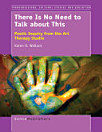Art's Way Out
2012年3月 · Transgressions 第 81 本图书 · Springer Science & Business Media
电子书
204
页
report评分和评价未经验证 了解详情
关于此电子书
In taking the critique of inclusion and entry as a first step, Art’s Way Out’s discussion of art, politics and learning aims to delineate what an exit pedagogy would look like: where culture is neither seen as a benign form of inclusion nor as a hegemonic veil by which we are all subscribed to the system via popularized forms of artistic and cultural immediacy. An exit pedagogy—as prefigured in what could be called art’s way out through the implements of negative recognition qua impasse—would not only avoid the all too facile symmetrical dualism between conservative and progressive, liberal and critical pedagogies, but also seek the continuous referral of such symmetries by setting them aside and look for a way out of the confined edifices of education and culture per se. An exit pedagogy seeks its way out by reasserting representation in the comedic, the jocular, and more effectively in the arts’ power of pausing, as that most effective way by which aesthetics comes to effect in its autonomist and radical essence. In this fluent, limpid, and scholarly work, Baldacchino examines, inter alia, the problem of empathy in relation to art as an event (or series of events), drawing upon a wide and rich range of sources to inform what in effect is his manifesto. With a profound understanding of its philosophical basis, Baldacchino unfolds his argument in an internally consistent and elegantly structured way. This is not a book to be ‘dipped into’, to do so would miss the development of Baldacchino’s philosophical position; like an art work itself, Art’s Way Out has coherent structure, and a complex, interrelation between form and content, reflecting an artist’s concern for getting things right. — Richard Hickman, Cambridge University Although art has a limitless capacity to take on myriad responsibilities, according to Baldacchino we also need to consider a ‘way out’ because only then will we understand how art goes beyond the “boundaries of possibility.” As he explains, “our way into reason also comes from an ability to move outside the limits that reasons sets”. This is the ‘exit pedagogy’ that he advocates. And here exit does not mean to leave, but rather to reach beyond, to extend and explore outside the borders we impose on learning, teaching, schooling and most forms of cultural agency. The need to embrace the capacity of art to cycle beyond the contingencies we impose on it also helps to clarify the limits of inclusive arguments for deploying art education for various individual, institutional, and socio-political ends: art as self expression, art as interdisciplinary method, art as culture industry, art as political culture, art as social justice and so on. This image invokes for me part of the legacy of Maxine Greene that Baldacchino revealed in his earlier text, Education Beyond Education (2009), when he explored her thesis of the social imagination, which is best, achieved when teaching becomes ‘reaching.’ What Art’s Way Out gives us is an exit strategy from the deadening tendency to ignore the enduring capacity of art to give life to learning, teaching and the very culture of our being. — Graeme Sullivan, Penn State University This is the sixth book authored by John Baldacchino, the other most recent books being Education Beyond Education. Self and the Imaginary in Maxine Greene’s Philosophy (2009) and Makings of the Sea: Journey, Doubt, and Nostalgia (2010). Currently Associate Dean at the School of Art & Design, University College Falmouth in England, he was full time member of faculty at Columbia University’s Teachers College in New York, Gray’s School of Art in Scotland and Warwick University in England. Front cover image: Monument to Marx / we should have spoken more (2009) by Mike Ting
为此电子书评分
欢迎向我们提供反馈意见。
如何阅读
智能手机和平板电脑
笔记本电脑和台式机
您可以使用计算机的网络浏览器聆听您在 Google Play 购买的有声读物。
电子阅读器和其他设备
如果要在 Kobo 电子阅读器等电子墨水屏设备上阅读,您需要下载一个文件,并将其传输到相应设备上。若要将文件传输到受支持的电子阅读器上,请按帮助中心内的详细说明操作。









